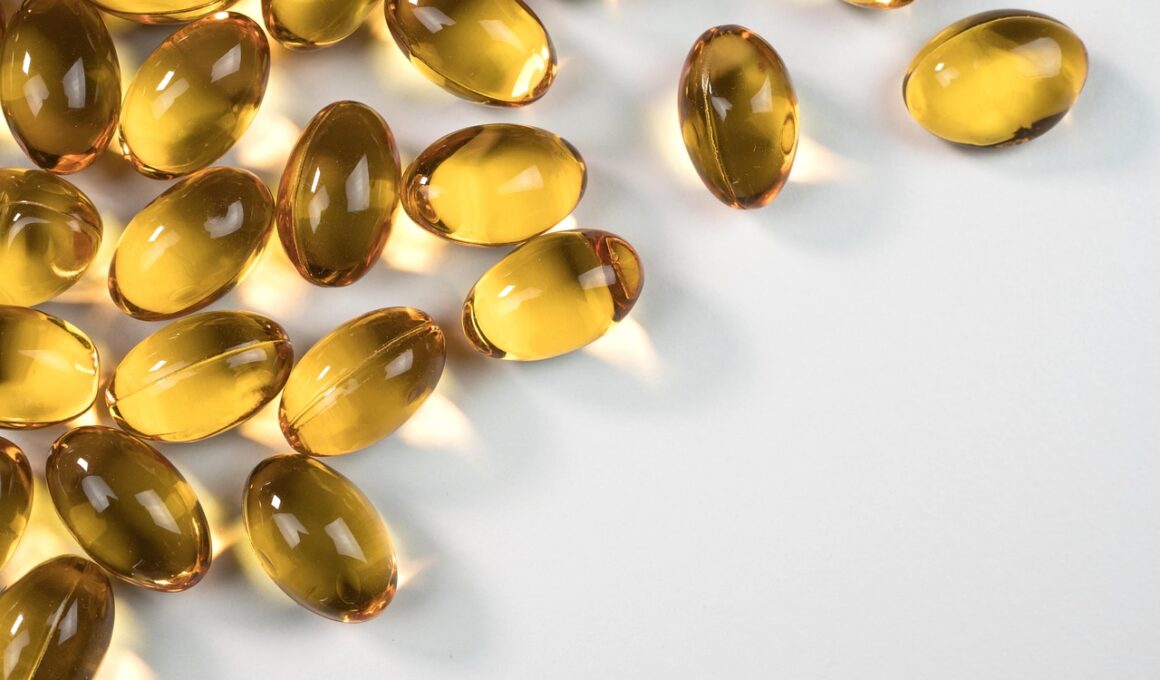Energy Gels for Team Sports Athletes: Boosting In-Game Energy
Energy gels are crucial for team sports athletes, as they provide the necessary quick-release carbohydrates to fuel performance. These gels come in various flavors and formulations, aiming to suit different athletes’ preferences and requirements. Designed to maximize athletic endurance, energy gels are often consumed during intense physical activity to maintain blood sugar levels. A key component of these gels is simple sugars, which are easily absorbed into the bloodstream to offer a rapid energy boost. Sports nutrition experts suggest consuming energy gels during games to prevent fatigue and enhance performance. The convenience of energy gels cannot be overlooked, as they are lightweight and portable, making them easy for teams to integrate into their training and game-day nutrition plans. Additionally, many athletes appreciate their ease of use, requiring no mixing or preparation. Gels also come with added electrolytes that help in preventing dehydration, an important factor during prolonged physical exertion. This makes energy gels a versatile choice for rigorous team sports like football, basketball, and soccer, where sustained energy levels are paramount for success.
Consuming energy gels during competition not only helps maintain endurance but also optimizes recovery post-activity. Athletes are encouraged to consume gels every 30-45 minutes during games, depending on the intensity and duration of the exertion. This strategy helps replenish glycogen stores and delays the onset of fatigue, allowing for peak performance. Moreover, the strategic timing of gel intake is essential; taking them too early or too late might not yield the desired effects. Gels designed specifically for team sports often contain additional ingredients, such as caffeine, to provide an extra energy boost and enhance focus. Athletes should experiment with different brands to find the best fit for their digestive systems, as some may experience discomfort from certain formulations. Reviews from fellow athletes can provide valuable insights into which gels work best for maintaining energy without side effects. It’s also beneficial to pair gels with adequate hydration, as this enhances their effectiveness. Teams that adopt energy gels as part of their nutritional strategy often see improved performance metrics, showcasing the importance of nutrition in athletic success.
Choosing the Right Energy Gel
Selecting the right energy gel is essential for team sports athletes to ensure optimal performance. With a wide array of options available, athletes must consider several factors when choosing an energy gel. First, check the carbohydrate content; gels should generally contain about 20 to 30 grams of carbohydrates per serving to effectively replenish energy levels. Additionally, taste plays a crucial role, as athletes need to enjoy the flavor to ensure consistent consumption during competitions. Many brands offer various flavors, so personal preference can significantly influence choice. Another important factor is the texture of the gel; some athletes prefer thinner gels, while others opt for thicker consistency. It is essential to try different products during practice sessions to avoid digestive issues during competitions. Apart from carbohydrates, consider the inclusion of electrolytes which help replace the salts lost through perspiration. This is especially crucial in high-tempo team sports where hydration often wanes quickly. Lastly, ensure that any chosen gels are easily accessible to all team members, fostering uniformity in team nutrition strategies and enhancing overall team synergy during games.
Before introducing energy gels into a team sports routine, testing and trialing is vital. Athletes should incorporate gels into their training regimens to familiarize themselves with their effects on performance and energy levels. This not only helps to identify which gels work best for individual athletes but also eases the transition during competitions. Additionally, encouraging athletes to monitor their energy levels during practices will provide insights into how the gels are affecting their performance. Coaches should promote discussions among team members about their experiences with different energy gels, fostering an environment where athletes can share tips and recommendations. Using these gels not just during games but also during longer training sessions will help athletes gauge their effectiveness. Nutrition workshops can further enhance understanding among athletes on the importance of energy gels in maintaining both energy and hydration. Keeping a log of how athletes feel after consuming gels can offer critical data for future events. With the right approach, energy gels can significantly boost athletic performance and contribute to a successful team dynamic.
The Science Behind Energy Gels
Understanding the science behind energy gels is crucial for athletes utilizing them effectively. Energy gels primarily consist of carbohydrates because they are the body’s primary source of energy during intensive workouts and competitions. When athletes consume these gels, the carbohydrates break down quickly into glucose, which provides an immediate energy source to working muscles. This quick energy release is vital during game situations, where performance hinges on speed and stamina. Typically, energy gels also contain electrolytes such as sodium and potassium, which help maintain fluid balance during exertion, reducing the risk of cramping. Research demonstrates that supplementation with energy gels can improve not only performance but also recovery times after rigorous physical activity. Consuming gels aids in replenishing glycogen stores, preparing athletes for subsequent workouts or competitions. It is imperative for athletes to understand optimal times for gel intake related to their exercise timing to maximize benefits fully. Engaging with sports nutritionists can further solidify an athlete’s understanding of how to utilize gels, taking their performance to the next level.
Though energy gels are beneficial, they must be used alongside a well-rounded nutrition plan. Relying solely on gels for energy can lead to nutritional imbalances if not complemented by whole foods such as fruits, vegetables, lean proteins, and healthy fats. These foods provide the needed vitamins and minerals to support overall athletic health, while gels serve their specific purpose as a quick energy-boosting supplement. Athletes should consider their overall dietary patterns when incorporating energy gels into their regimens. A balanced diet will ensure that they receive essential nutrients needed for optimal performance. Additionally, adequate hydration, particularly when using gels, is crucial as gels do not replace fluids. Athletes must remain mindful of their hydration levels even while consuming energy gels. In essence, energy gels serve as a tool to enhance performance and provide sustainment during competition and rigorous workouts. Realistic expectations around their use will lead to better outcomes, emphasizing the role of comprehensive nutrition over reliance on any single product for enhancement of performance.
Conclusion: Energy Gels in Team Sports
In conclusion, energy gels offer numerous benefits for team sports athletes seeking to boost in-game energy. Their ease of use, quick absorption capabilities, and delicious flavors make them a popular choice among various athletes. Well-incorporated into training and competition strategies, gels can significantly delay fatigue and enhance overall performance, provided they are used correctly. Teams that prioritize nutrition, including energy gels, often find themselves outperforming competitors who neglect this pivotal aspect of athletics. It is crucial to foster a culture of experimentation with energy gels within teams, allowing athletes to find what suits them during games and workouts. Additionally, discussions around energy gels can lead to learning experiences that enhance team performance collectively. Emphasizing proper hydration and recovery alongside gel intake will ensure that athletes maintain optimal energy levels throughout their sports. By understanding the science, experimenting with flavors and formulations, and utilizing gels as part of a balanced nutrition intake, athletes can master the use of energy gels, driving team success in competitive environments. The combination of proper nutrition principles and energy gels will establish a comprehensive approach to performance enhancement in team sports.
Innovation in energy gel formulation continues to evolve, enhancing nutrient absorption and flavor profiles. New advancements, such as plant-based gels, cater to the growing number of athletes seeking vegan options, while still delivering on taste and energy-boosting capabilities. Furthermore, industry trends are shifting towards more natural ingredients rather than artificial sweeteners and preservatives. Ingredients such as coconut water, maple syrup, and maltodextrin are gaining popularity for their beneficial properties. The health-conscious athlete prefers these as they minimize chemical additives that can cause adverse reactions. As more studies highlight the benefits of specific nutrients found in natural ingredients, brands are leveraging this awareness to create products that appeal to a broader audience. Additionally, portable and environmentally friendly packaging are emerging as priorities, aligning with athletes’ values. Looking toward the future of sports nutrition, collaborations with nutritionists and athletes are allowing manufacturers to refine their products based on real-world feedback. These innovations will continue to shape how energy gels are perceived and utilized in the sporting community. Understanding trends will also help athletes make informed choices for their sports nutrition, ensuring they remain at the forefront of their physical capabilities.


